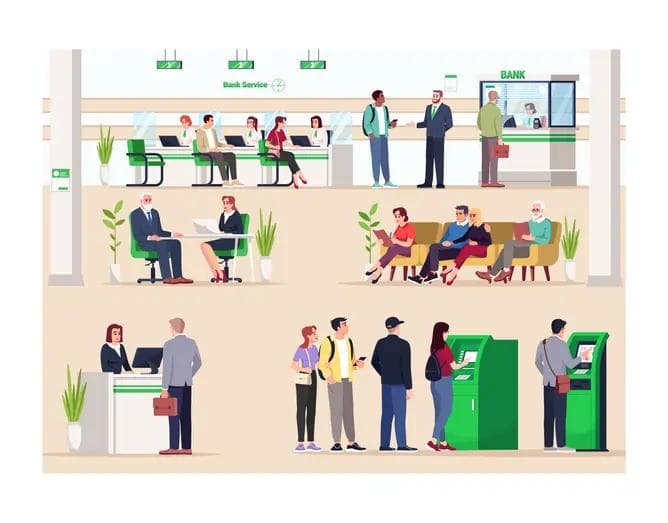Simplified Due Diligence (SDD): An Opportunity Banks Have Been Missing Out On
Simplified Due Diligence (SDD): An Opportunity Banks Have Been Missing Out On
Published by Jessica Weisman-Pitts
Posted on October 11, 2022

Published by Jessica Weisman-Pitts
Posted on October 11, 2022

By Anna Oleksiuk, FinTech Practice Lead at Intellias Global
A new kind of retail bank is emerging – one that prioritises digital customer experiences and offers a streamlined end-to-end account opening process. In the aftermath of the pandemic, banks have made the digitalisation of services a top priority as customers of all ages embrace the convenience conferred by digital tools like mobile banking.
With today’s consumers now expecting to encounter frictionless self-service channels that make it easy to undertake routine day-to-day transactions, getting the digital banking experience right is now a critical foundation for building stronger customer relationships. Fundamentally, the quality of online experience is now the benchmark for how most consumers determine who they bank with, while mid-pandemic research revealed that 67% of millennials, 54% of Gen Z, and 45% of Gen X said they were ready to switch financial providers in search of a better digital experience.
For retail banks, this represents both an obstacle and an opportunity. But winning and keeping customers begins with the digital account opening experience itself.
First impressions count
For many traditional retail banks, the digital onboarding process continues to be a top challenge. While some are hampered by legacy banking infrastructure that can’t accommodate end-to-end digital account creation, others are struggling with overly rigid compliance processes featuring extensive background and know-your-customer (KYC) checks.
As a result, customers find they are often still required to present themselves in-branch to undertake in-person ID verification or account funding and it can take up to several days to complete the opening of a current or savings account.
By contrast, online-only banks and FinTechs are unfettered by such issues. That’s because they utilise a progressive digital account opening process, backed by a simplified due diligence (SSD) framework, that enables the rapid onboarding of customers with near instant approvals.
If retail banks want to compete on a level playing field and grow their business volumes without escalating operational risks, they too will need to take advantage of SSD processes that streamline KYC procedures.
Simplifying customer onboarding with SSD
Simplified due diligence is a FATF-approved KYC policy that leverages certain verification procedures for low-risk products and/or low-risk individuals. Having been around since 2016, SDD has helped ignite the growth of online banks and FinTechs alike.
Retail banks that want to make a memorable first impression with the delivery of a superior digital account opening experience now need to offer a personalised ‘Amazon-style’ digital onboarding sequence that captures the basic personal information and aspirations of applicants. For example, do they want to save, borrow, or grow their income? Are they looking for high interest, low banking fees, rewards, or cashbacks? What are the details of their monthly income? Armed with these insights, banks can then provide a selection of relevant products for customers to review.
Once customers select their preferred production option, minimal KYC information can then be captured using native smartphone functionality (camera, location-based services, biometrics). Customers can upload photos of ID credentials (passport, driver’s licence, or other photo ID documentation) together with proof of address documentation to prove they are who they say they are.
If a customer is applying for a more sensitive financial product such as a credit card or loan, there are a number of options open to banks when it comes to streamlining KYC procedures. These include using digital IDs granted by other financial institutions or third party providers as well as mobile ID credentials. Similarly, banks can utilise credit data obtained from telco or utility providers or self-reported by users, who are free to digitally upload any other additional documents they deem necessary.
Having received all required base level information, banks are able to instantly issue mobile banking login credentials to the applicant. While the customer enjoys a quick account tour, banks can conduct further checks in the background – for example, utilising AI and machine learning to undertake anti-money laundering (AML) checks – before unlocking access to more sensitive banking features. Once all the customer’s information has been verified and a low risk score assigned, banks can finally grant full account access.
As customers begin using the new account, they can be prompted to provide additional regulatory-driven information. For example, additional compliance steps and KYC processes can be triggered by events such as large deposits, unusual cross-border transactions, or frequent crypto currency trading activities.
Ultimately, SSD enables banks to collect all the base level information they need to undertake compliance and risk management checks and reporting without unnecessarily disturbing or holding up the onboarding process or alienating customers in the early stages of their product use.
Go digital with onboarding or go obsolete
As millennials and Gen Z consumers become the dominant customer segment, there’s all to play for when it comes to digitally onboarding existing customers to new products or attracting business from new customers.
This cohort of consumers won’t tolerate waiting seven or more days to open an account or initiate a new product with an existing provider. Similarly, they won’t settle for lacklustre and extensive KYC procedures when, with a few taps, they can switch to a competitor offering a faster, more streamlined account opening experience.
With Gartner predicting that digitalisation is set to make many heritage financial institutions irrelevant by 2030, retail banks need to act now to give customers near instant access to financial products that don’t require them to jump through hoops or revert to presenting physical documentation in-branch.
Seizing the digital opportunity
Customer experience (CX) is now a defining competitive differentiator in the banking sector, and customers will make snap decisions about interactions at every touchpoint – including the digital onboarding experience.
With 68% of European consumers abandoning an online account application in 2022 – up from 40% in 2016 – the message for banks is clear. Today’s digitally savvy consumer base expects on-demand digital-only onboarding processes that deliver access to services as swiftly as a social media login.
To capture and successfully onboard the savings and retirement funds of millennials and Gen X, who typically turn to traditional banks for these products, retail banks will need to rethink how they conduct KYC in the digital age and take steps to simplify due diligence.
By focusing on a specific cohort of low risk verified customers and prioritising digital experience, banks will be able to sustainably increase the number of users that can successfully take advantage of the services they can offer.
Explore more articles in the Banking category











